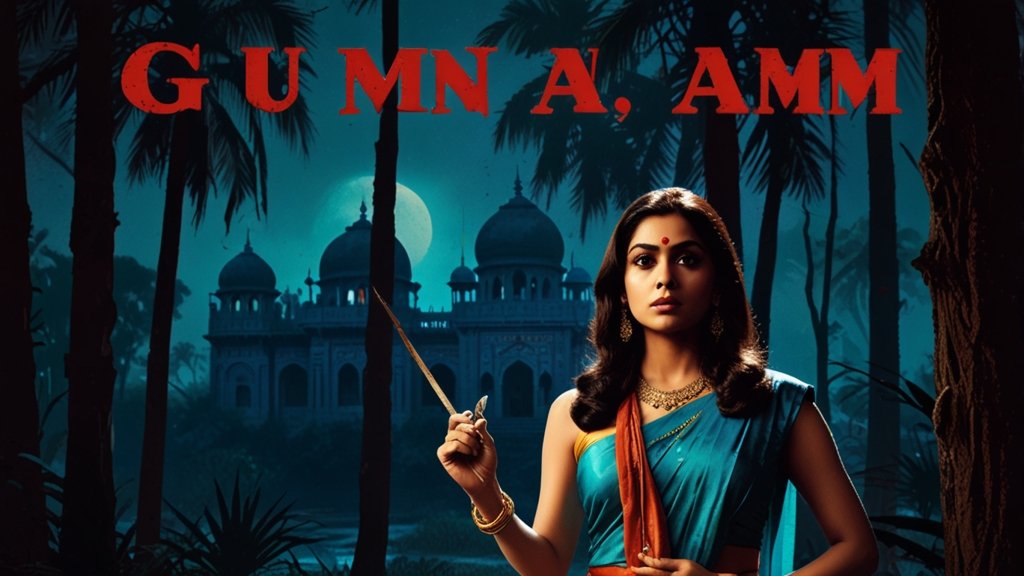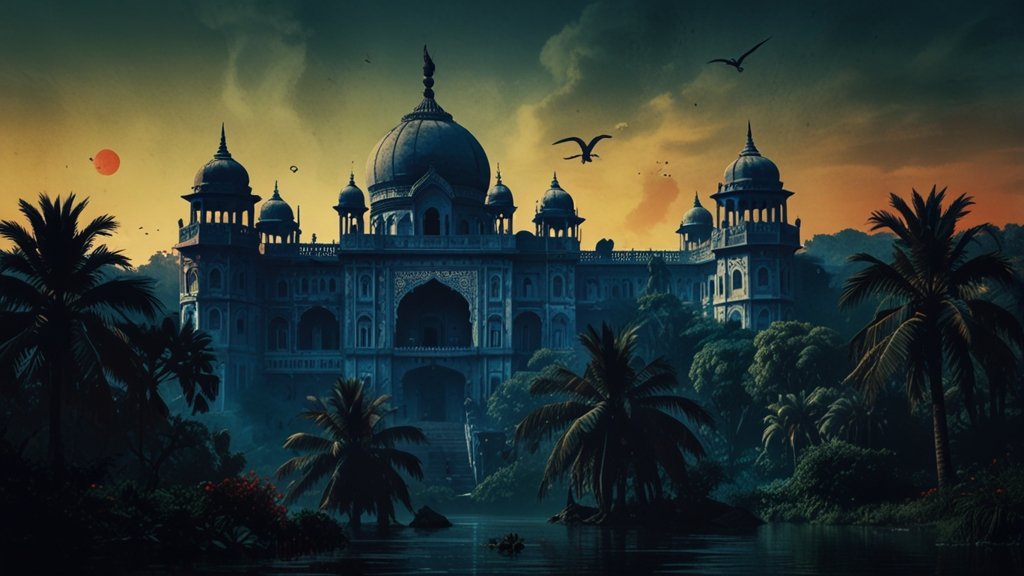Gumnaam (1965) Review: A Timeless Bollywood Mystery Thriller with Haunting Suspense
Explore the eerie charm of Gumnaam (1965), a Bollywood mystery thriller that blends suspense, drama, and unforgettable music. Discover why this cult classic still haunts audiences decades later.

Introduction
In the golden age of Bollywood, where romance and melodrama reigned supreme, Gumnaam (1965) emerged as a game-changer. Directed by Raja Nawathe and inspired by Agatha Christie’s celebrated novel And Then There Were None, Gumnaam brought together mystery, murder, and music to craft one of the most compelling thrillers in Indian cinematic history. With a star-studded cast, suspenseful storytelling, and haunting musical interludes, this film left a lasting legacy that continues to fascinate audiences even today.
https://www.youtube.com/watch?v=CY3CRVSeLA0
Cast and Crew
- Director: Raja Nawathe
- Screenwriters: Dhruva Chatterjee, Charandas Shokh
- Inspired by: Agatha Christie’s And Then There Were None
- Lead Cast:
- Nanda as Asha
- Manoj Kumar as Anand
- Pran as Barrister Rakesh
- Mehmood as the Butler
- Helen, Madan Puri, Dhumal, Tarun Bose, Laxmi Chhaya
- Music: Shankar-Jaikishan
- Cinematography: K.H. Kapadia
- Production: Prithvi Pictures
- Genre: Drama, Mystery, Musical, Crime
Plot Overview
The story kicks off with a curious contest in a newspaper, where eight lucky individuals win a luxurious vacation. The winners—a mix of strangers—board a private airplane for a mystery destination. What begins as a thrilling getaway turns into a nightmare when their plane is forced to make an emergency landing on an isolated, jungle-clad island. As the group ventures into the unknown, they come across a sprawling mansion in the middle of the forest.
Here, they meet a strange but welcoming butler (played to perfection by Mehmood) who behaves as though he had anticipated their arrival. This sets off a series of eerie events that escalate when a haunting female voice begins to sing the spine-chilling track “Gumnaam Hai Koi,” echoing through the darkness.
Terror grips the guests as one of them is murdered that very night. Panic sets in when they discover there’s no way to leave the island and that someone among them might be the killer. The atmosphere becomes claustrophobic as mistrust grows, alliances shift, and secrets begin to unravel.

Themes and Symbolism
Gumnaam excels in its exploration of guilt, justice, and retribution. Every character is seemingly carrying the weight of a hidden crime, a secret that connects them to the killer’s motive. The film touches upon moral ambiguity, suggesting that justice might not always come from legal systems but through poetic retribution. The setting—a remote island—acts as a symbol of isolation and confinement, echoing the psychological entrapment of the characters.
The constant presence of the haunting song serves as a ghostly reminder of their shared sins, increasing the psychological tension. The character of the butler, played by Mehmood, provides comic relief yet remains unsettling in his own right—a mask of innocence that might hide a more sinister truth.
Performances
- Manoj Kumar as Anand provides a grounded and compelling performance as the undercover cop. His evolution from a laid-back traveler to a sharp investigator is executed with subtlety and strength.
- Nanda brings vulnerability and grace to her role as Asha. Her expressions convey fear, curiosity, and courage with effortless charm.
- Mehmood steals many scenes with his comedic timing, but it’s his mysterious undertone that adds to the suspense.
- Pran, Helen, and others deliver commendable performances that contribute to the ensemble’s dynamic tension.
Cinematography and Sound Design
K.H. Kapadia’s cinematography elevates the eerie atmosphere of the film. The use of shadows, candle-lit corridors, and panoramic shots of the island enhances the sense of isolation. The jungle, mansion, and fog-drenched visuals create a chilling ambiance. The sound design deserves special mention, with moments of silence used effectively to heighten suspense.
The haunting tune of “Gumnaam Hai Koi” remains one of the most iconic elements of the film. Sung by Lata Mangeshkar, the song lingers in the background like a ghostly whisper, amplifying the sense of dread.
Music and Songs
The music by Shankar-Jaikishan is one of the film’s biggest assets. Unlike most Bollywood thrillers, Gumnaam successfully integrates its songs into the narrative without diluting the tension.
- “Gumnaam Hai Koi” – A chilling melody that sets the tone of the film.
- “Jaan Pehchaan Ho” – An energetic dance number performed by Laxmi Chhaya, this song gained international fame and has been featured in several Western films and commercials.
- “Ek Ladki Hai Jisne” and other tracks balance romance, mystery, and tension beautifully.

Adaptation from Agatha Christie
While Gumnaam takes creative liberties with Agatha Christie’s And Then There Were None, it retains the core suspense and structure of the novel. The adaptation to an Indian setting is commendable, especially the cultural inclusion of music and dance. The film manages to maintain the psychological intensity of the original while tailoring it to Bollywood sensibilities.
Legacy and Influence
Gumnaam stands tall as one of the earliest examples of Bollywood embracing the mystery-thriller genre. It laid the groundwork for future films that dared to venture beyond conventional themes. The film’s unique blend of horror, suspense, and comedy was revolutionary for its time.
Today, Gumnaam enjoys cult status. Its influence can be seen in modern thrillers and in how Bollywood continues to experiment with genre storytelling. The song “Jaan Pehchaan Ho” continues to be a pop culture phenomenon, introducing new generations to the film.
Visual Style
The film’s visual language is defined by its moody color palette, surreal lighting, and expressive set designs. The mansion becomes a character in itself—full of hidden corridors, eerie rooms, and symbols of decay. The use of wide-angle shots, close-ups on fearful expressions, and abrupt scene transitions contribute to the unsettling narrative tone.
The costuming is another noteworthy element. From glamorous evening gowns to rustic jungle attire, the contrast adds to the characters’ shifting realities.
Conclusion
Gumnaam (1965) is more than just a film; it’s an experience that continues to haunt and mesmerize. With its brilliant adaptation of a classic murder mystery, strong performances, unforgettable music, and a richly atmospheric setting, Gumnaam carved a niche for itself in Indian cinematic history. It proved that Bollywood could master suspense just as well as romance, and that even decades later, a well-crafted mystery can still send shivers down our spine.
If you’re a fan of gripping narratives, haunting melodies, and vintage Bollywood charm, Gumnaam is a must-watch. It’s a reminder that sometimes, the past doesn’t just haunt us—it sings to us.
Written by: [Your Name]
